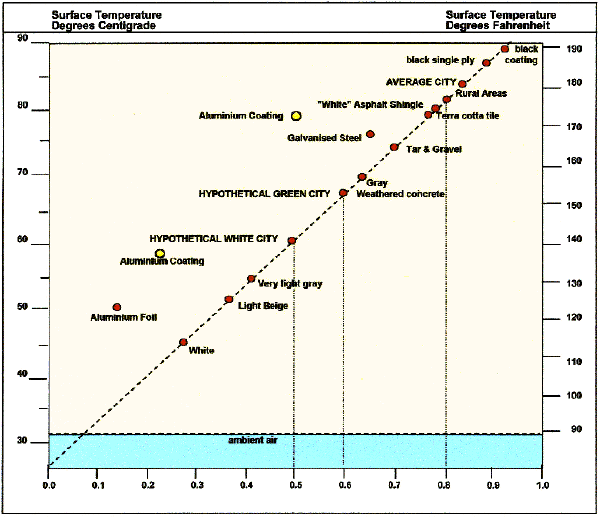absorptivity

Solar absorptivity.
In a solar thermal collector, absorptivity is the ratio of solar energy striking the absorber that is absorbed by the absorber to that of solar energy striking a blackbody (a perfect absorber) at the same temperature. The absorptivity of a material is sometimes equal to its emissivity bt is generally not.
In a pure radiative model, the equilibrium temperature is set by the absorptivity to emissivity ratio, which by definition for a black body is 1. This is also true for any gray body once band limited to the continuum or part thereof from the thermalized kinetic distribution. Once band limited, as for instance, in a room with no heating or cooling present then no single object by its own physical properties can raise its temperature above that of another. The efficacy for emission over absorption is unweighted. Indeed absorption is identical to the time reversal of emission. However, your paragraph opens with "in a solar thermal collector", whereby, as you are aware I am sure, the material after absorbing solar energy at this distance never emits energy anything like the absorbed photon energy per photon. For example, visible light from the Sun is born of outer electron energy steps in the photosphere, and those photons have sufficient energy to stimulate outer electrons to a raised energy level upon absorption. This is a nonthermal process as it does not by itself increase the temperature (kinetic energy) of an individual atom or molecule. Some other mechanism is generally required to enable the energy to 'downgrade' into the thermal states of atomic bulk motion. This 'radiationless transition' is a one way process similar to a white ball in a snooker break sharing energy with many slower balls. No matter how many slow balls impact each other the velocity of the incoming white can never be reconstructed by spontaneous collision. The point here is that absorbing solar energy is a completely different physical process to emission once the energy has been transferred to the thermal states. This leaves room for massive differences in the absorptivity to emissivity ratio and subsequent equilibrium temperature.
Modern solar thermal coatings take advantage of this by making the absorptivity in the solar spectrum band high, whilst minimizing the emissivity in the long wave.
